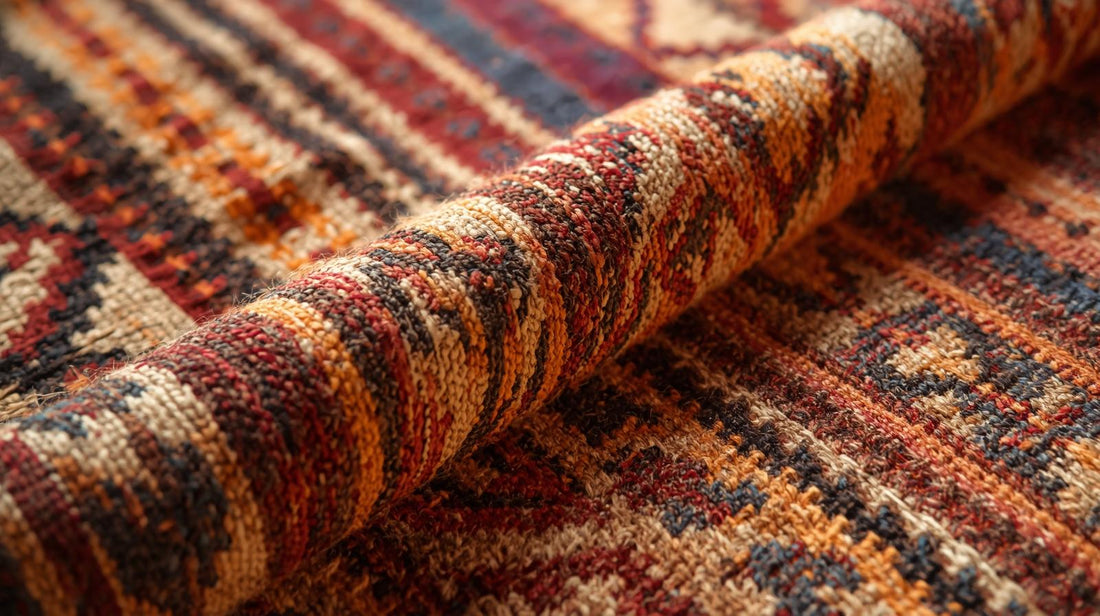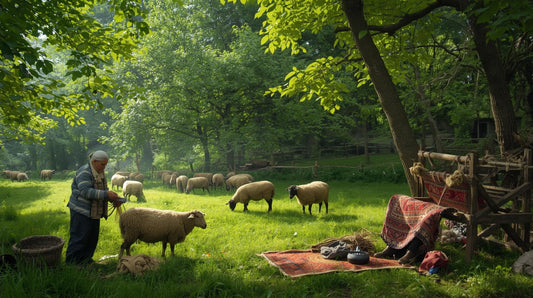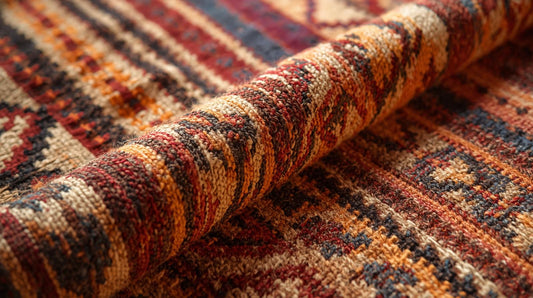The Story, Craft, and Value of Hand Woven Kilims

The Story, Craft, and Value of Hand Woven Kilims a deep dive
Hand-woven kilims are more than floor coverings. They are portable pieces of history, living design archives and functional artworks made by hands that have perfected regional traditions across centuries. Below is a detailed, research-style yet reader-friendly guide to kilim history, craft, motifs, materials, care, authentication and — importantly — how to choose a kilim that will enhance your home and keep its value for years. At the end I’ll explain why buying from a family business like Cappadocia Rug Collection brings added value.
1. What is a kilim?
A kilim is a flat-woven textile created without a pile. Unlike knotted pile rugs, kilims are made by interweaving warp and weft threads so the surface is flat and reversible. This technique produces crisp geometric patterns, bright color fields and a thin, durable fabric that’s ideal for floors, walls, furniture covers, and more.
Key features:
-
Flatweave (no pile), reversible
-
Usually wool on wool (warp & weft), sometimes cotton warps
-
Strong geometric designs and symbolic motifs
-
Lighter and thinner than pile rugs — easier to move or hang
2. Kilim history — origins and evolution
Origins and early history
-
Kilim weaving is ancient. Flat-woven textiles appear in archaeological finds from Anatolia, Central Asia, and the Caucasus dating back millennia. While exact dating is complicated, fragments and depictions suggest flatweaves were produced alongside knotted pile rugs from very early on.
-
The word “kilim” comes from Turkish and Persian roots (cf. Turkish kilim, Persian gelim), but flatweave traditions are pan-Eurasian — from North Africa and the Balkans to Iran, the Caucasus, and Central Asia.
Medieval to early modern period
-
Between the 13th and 18th centuries the nomadic and village weaving cultures of Anatolia, Persia and the Caucasus developed regional kilim styles. Nomadic kilims tended to be smaller, portable, and highly symbolic; village kilims were often larger and reflected community tastes.
-
Kilims accompanied seasonal migrations, dowries and everyday life; motifs carried meaning (protection, fertility, luck) and sometimes signalled the weaver’s tribe or village.
Industrial era to modern collectors
-
In the 19th and early 20th centuries European demand for Oriental textiles grew. Some kilims were made specifically for export; others remained local. Industrialization and synthetic dyes changed materials and colors in many regions, but the craft persisted in rural weaving communities.
-
In the late 20th and 21st centuries, renewed interest in handmade textiles, natural dyes and ethical sourcing has driven collectors and home designers back to traditional kilims.
Regional varieties (a short map)
-
Anatolian (Turkish) kilims — wide range of motifs, often geometric medallions and repeated bands; strong tradition in Cappadocia, Konya, Bergama, Hereke surrounding regions.
-
Caucasian kilims — bold, bright palettes and angular motifs.
-
Persian kilims (e.g., Afshar, Luri, Kordi) — rich tribal patterns with symbolic language.
-
Central Asian flatweaves — larger pictorial elements in some areas, tribal insignia.
3. How kilims are made — the craft explained
Warp and weft
-
The structure of a kilim is simple: vertical warp threads are stretched on a loom; horizontal weft threads are woven through them. The weft is beaten tightly to create a compact, firm surface.
Slit weave technique
-
Many kilims use the slit-weave method: when colors change, the weft threads are turned back leaving a small vertical slit. This creates crisp color boundaries and the characteristic sharp geometry.
Materials and dyes
-
Traditionally, kilims use wool for both pile and structure; wool takes dye beautifully and has natural resilience. Cotton warps became common where extra tension/stability was desired.
-
Natural dyes (madder, indigo, walnut, pomegranate, etc.) produce soft, ageable colors. Synthetic aniline dyes arrived in the late 19th century and created brighter but sometimes less stable colors.
Weaver’s role
-
Many kilims are woven by women in family settings. A weaver often works from memory or family patterns, sometimes inventing variations for particular customers or life events.
4. Motifs, symbolism and meaning
Kilims are rich in symbolism. Motifs are often shorthand for cultural values, protection and life events. A few common motifs:
-
Elibelinde (hands on hips / motherhood) — fertility and motherhood.
-
Ram’s horn — masculinity, heroism, protection.
-
Evil eye / nazar — protection against envy or ill will.
-
Hook / scorpion motifs — protective signs.
-
Running water / waves — life force, continuity.
-
Losanges (diamonds) — often a protective or eye motif; sometimes a stylized female figure.
Interpreting motifs requires care: meanings vary by tribe, region and era. The same pattern can carry different weight depending on where the kilim was made.
5. How to authenticate & assess quality
Look for:
-
Evenness of weave — tight, uniform plainweave with no loose areas.
-
Edges and selvedges — neatly finished; well-secured ends indicate care.
-
Natural dyes vs synthetic — natural dyes age gracefully; synthetic may be brighter but can bleed or fade unevenly.
-
Wear consistent with age — honest patina and repair work are normal for older pieces and add character.
-
Provenance — labels, seller information, photos of the weaving region or workshop increase confidence.
Common red flags:
-
Machine-made flatweaves masquerading as handwoven (look for perfectly uniform mechanical weaving patterns, printed backs or perfectly matched mirrored designs), overly glossy synthetic fibers, or mislabeled “antique” pieces.
6. Practical buying guide — choose the right kilim for your space
Size and placement
-
Kilims read differently than pile rugs. They layer well over hardwood or stone floors, work as wall hangings, or fold over sofas. Measure carefully and imagine negative space around the rug — kilims often look best when they sit within a frame of floor or furniture.
Color and motif
-
Use a kilim to add color and pattern. For modern minimal interiors, choose a kilim with a restrained palette; for eclectic or bohemian rooms, bold tribal colors can be a focal point.
Function
-
Kilims are durable but thin: use in low-to-medium traffic areas, under coffee tables, hallways (with a thin anti-slip pad), or as decorative wall hangings. Avoid heavy, damp areas where moisture could damage natural fibers.
Care and maintenance
-
Vacuum regularly on a gentle setting (no beater bar). Rotate periodically. For stains, blot quickly and consult a rug professional experienced with natural dyes and handwoven textiles. Every few years, a professional handwash (not machine) will refresh natural fibers.
7. Why a hand-woven kilim is a smart purchase (value beyond price)
-
Heritage and uniqueness: each handwoven kilim is a one-of-a-kind expression of a weaver’s skill and cultural vocabulary.
-
Sustainability: handweaving uses natural fibers and low-energy processes compared with industrial manufacturing.
-
Longevity: well-made kilims can last generations and become family heirlooms.
-
Design versatility: flatweaves are light, reversible and flexible — suitable as rugs, wall art, or upholstery.
-
Investment in craft: purchasing supports artisans and keeps regional weaving traditions alive.
8. Why buy from Cappadocia Rug Collection
At Cappadocia Rug Collection we combine deep knowledge, family tradition and careful sourcing to bring authentic hand-woven kilims to discerning buyers:
-
Family expertise: nearly half a century of involvement in traditional weaving and rug trade means we understand materials, weaving techniques, and provenance.
-
Curated selection: we select pieces for authenticity, condition and design — not mass stock. Each kilim is examined for weave, dye stability and structural integrity.
-
Transparent information: every piece is described with origin, age estimate, dimensions and care instructions so you can buy with confidence.
-
Customer care: because we’re a family business, every sale is personal. We help you choose the right size, recommend care and offer guidance on display and layering.
-
International shopping experience: we ship carefully packed kilims worldwide and can provide additional photos or video of a piece in your requested setting.
Visit cappadociarugcollection.com to see current kilims and get tailored buying advice. If you’d like, we can send high-resolution photos or help match a kilim to a room using your photos.
9. Final checklist before purchase
-
Confirm exact measurements and leave allowance for furniture legs.
-
Ask about dye type (natural vs synthetic) and colorfastness.
-
Request close-up photos of weave, edges and any repairs.
-
Check return policy and shipping/insurance for international delivery.
-
If buying antique/old pieces, request provenance or any restoration history.
Hand-woven kilims are tactile history—design objects that bring warmth, pattern and cultural depth into a home. If you’re shopping for a kilim to add authenticity and character to your space, or to invest in a piece of craft that will age gracefully, Cappadocia Rug Collection is ready to help you find the right match from our family’s curated selection.
No comments







0 comments